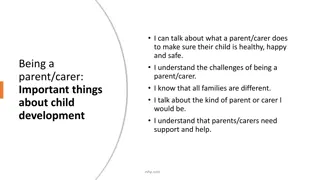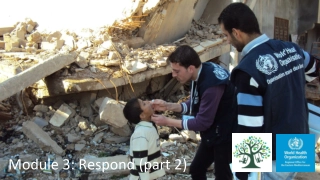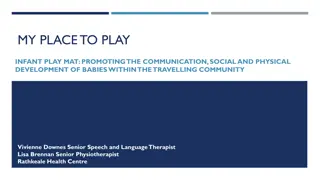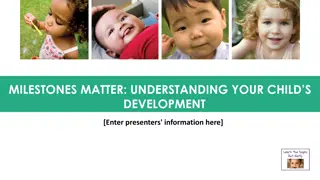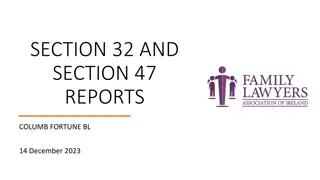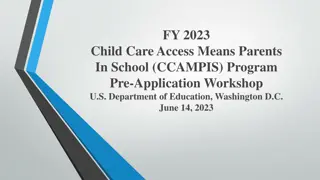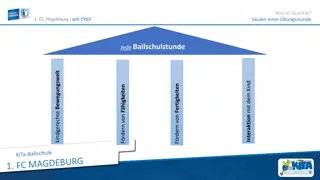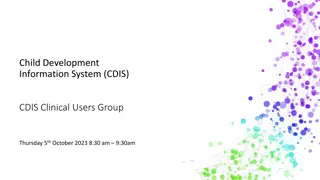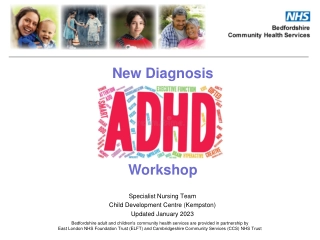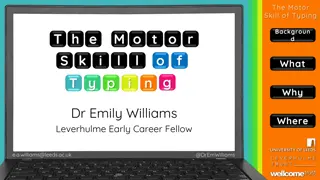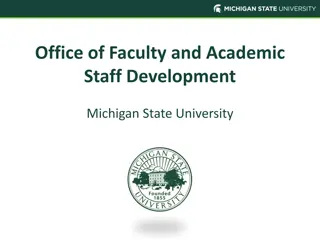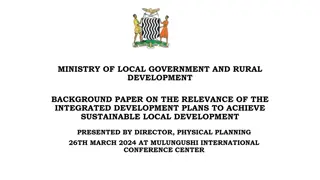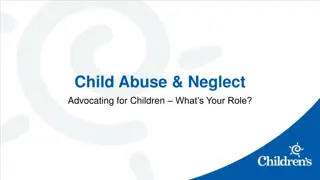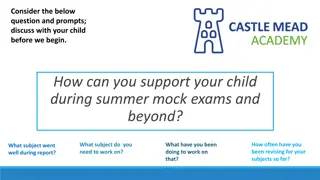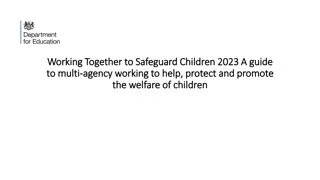Genetics and Child Motor Development
The influence of genetics on child motor development and its implications for learning. Understand genetic disorders in the classroom and the subtle variations that can have significant ramifications. Learn about 22q11 deletion syndrome and its neurodevelopmental implications.
- genetics
- child motor development
- learning
- genetic disorders
- 22q11 deletion syndrome
- neurodevelopmental implications
Download Presentation
Please find below an Image/Link to download the presentation.
The content on the website is provided AS IS for your information and personal use only. It may not be sold, licensed, or shared on other websites without obtaining consent from the author. Download presentation by click this link. If you encounter any issues during the download, it is possible that the publisher has removed the file from their server.
Presentation Transcript
DR LIAM JB HILL L.J.HILL@LEEDS.AC.UK @DRLIAMJBHILL THE INFLUENCE OF GENETICS ON CHILD MOTOR DEVELOPMENT AND IMPLICATIONS FOR LEARNING
WHY DISCUSS THE ROLE OF GENETICS IN THE CLASSROOM? Two thirds of differences in school achievement relate to our genetic endowment (Kovas et al., 2013) Should we therefore feel fatalistic about the large role of genetics in child development? Twin studies have found (Rimfeld et al., 2018): Around 70% of the stabilityin children s attainment over time is predicted by their genes BUT When we see changes over time in attainment this is much more influenced by the environment rather than genetics!
GENETIC DISORDERS IN THE CLASSROOM Down s Syndrome Fragile X Syndrome Often think of big changes in the underlying genome, which are outwardly obvious and easy to detect
MANY ARE MORE SUBTLE BUT STILL HAVE BIG RAMIFICATIONS We have an ever increasing understanding of genetic variation in the population CNVs Copy Number Variations Small Deletions and/or Duplications Rare CNVs increasingly identified as a major risk factor in childhood Psychiatric Disorders Thaper & Cooper (2013), doi: 10.1016/j.jaac.2013.05.013 Schizophrenia Autistic Spectrum Disorder (ASD) Attention Deficit Hyperactivity Disorder (ADHD)
A BRIEF DESCRIPTION OF 22Q.11 DELETION SYNDROME AKA: DiGeorge Syndrome (DGS), Velocardialfacial Syndrome (VCFS) A hemizygous microdelection on the long arm of the 22ndchromosome Affecting ~ 1 in 2,000-4,000 live births Highly heterogeneous, from severe physical abnormalities to no discernable effect effect Bassett et al. (2011), doi: 10.1016/j.jpeds.2011.02.039 Severity not associated with deletion size Carlson et al. (1997), doi: 10.1086/515508
THE NEURODEVELOPMENTAL IMPLICATIONS OF 22Q11.2DS Cognitive Impairment Mild to moderate Verbal and Performance IQ deficits (on WASI) Processing speed, Attention and Vigilance and Executive Function deficits (using CANTAB and WCST) Niarchou et al. (2014), doi: 10.1192/bjp.bp.113.132324 Increased risk of Psychopathology In childhood there are increased rates of: ADHD Anxiety Disorder Oppositional and Defiant Disorder ASD Mood Disorder Psychotic Disorders (in Adolescence) Schnieder et al. (2015), doi: 10.1176/appi.ajp.2013.13070864 Sensorimotor impairment? Motor impairment on standardised movement batteries reported. Van Aken et al. (2009), doi: 10.1080/09297040902740678; Sobin et al. (2006), doi: 10.1002/mds.21103 Specific deficits in prospective motor control? Van Aken et al. (2010), doi: 10.1016/j.ridd.2010.01.002
ARE SENSORIMOTOR IMPAIRMENTS PRIMARY OR SECONDARY? Cognitive Difficulties (e.g. IQ) Sensorimotor Problems 22q11.2DS Psychopathology (e.g. ADHD) Cognitive Difficulties (e.g. IQ) 22q11.2DS Psychopathology (e.g. ADHD) Sensorimotor Problems
OUR RESEARCH Ptps in The Experiences of CHildren with cOpy number variants (ECHO) longitudinal cohort study 42 Children with 22q11.2DS (81% de novo, 12% inherited) 18 of their nearest in age unaffected siblings 22q11.2DS 73.8% 12y 8m [3y 9m] Siblings 66.7% 13y 4m [3y 4m] Gender (% Male) Age (Mean [SD])
FINDINGS Cognitive Functioning Sig. IQ deficits - FSIQ, VIQ and PIQ Sig. Attention deficits - RVP & Match to Sample Some sig. Exec. Function deficits - SWM and Problems solved in minimum moves on SoC Clear signs of Motor Impairment Psychopathology Sig. increased symptom counts for ADHD, ASD and Anxiety in ptps with 22q11.2 DS Sensorimotor & Cognitive relationships? Less than half of the motor skills impairments we observed were associated with IQ deficits Sensorimotor & Psychopathology relationships? Only one weak association observed, with ADHD on one motor task.
TAKE HOME MESSAGES Yes, genetics have a big impact on learning BUT Early recognition and intervention can have a huge beneficial impact can disrupt the prevailing influence of genetics. Genetic disorders (e.g. CNVs) are likely more prevalent than we realise and not as readily detectable as we might presume. 1.8% of the BiB cohort identified as having some from of CNV. A lot of the behavioural disorders you may be familiar (e.g. ASD, ADHD) with have a genetic component. Genetics suggest that these conditions inter-relate and overlap though. So view each child as an individual In particular, be aware motor difficulties are often present in individuals with neurodevelopmental disorders, and require specific treatment/support (they re not a by-product!)
ILLUSTRATING THE ABSENCE OF NEAT SEPARATION AMONGST DIAGNOSES ASD DCD No diagnosed Disorder ADHD ID LD Dyck et al. (2011)
WEB RESOURCES FOR TEACHERS ON SUPPORTING CHILDREN WITH 22Q From the 22q Foundation (US): https://22qfamilyfoundation.org/what-is-22q/22q-for-teachers From the VCFS 22 Foundation (Aus & NZ): https://www.22q11ireland.org/wp-content/uploads/2020/08/22q-Intro-for-Teachers- Caregivers.pdf
THANKS Co authors Cardiff University, MRC Centre for Neuropsychiatric Genetics & Genomics Adam Cunningham (PhD student) Prof David E.J. Linden Prof Jeremy Hall Prof Michael J. Owen Prof Marianne van den Bree University of Leeds School of Psychology Prof Mark Mon-Williams Funders (of the ECHO cohort)



